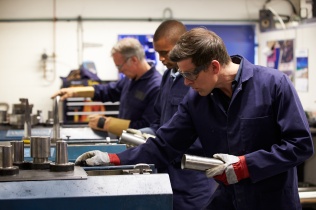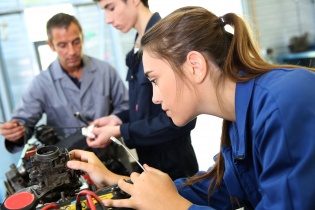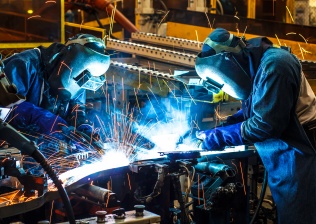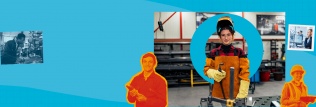Meet Lauren – former Seta apprentice
Lauren is a fitter at crane manufacturer Liebherr Sunderland Works Ltd, working on the undercarriages of the company’s huge cranes, which can lift up to 308 tonnes, and honing her engineering skills every day.
She started training with Seta in September 2019 after securing her Engineering Fitter Apprenticeship with Liebherr Sunderland Works Ltd, which is part of the multinational Liebherr Group. After six months she started to work at her employer’s site next to the River Wear, while attending Seta one day per week.
So, what’s Lauren’s story?
Let’s find out!
Why did you choose the apprenticeship route, as opposed to college or sixth form?
I enjoy gaining actual experience and practical learning - an apprenticeship allowed me to achieve both. The fact I would be paid to train was a big bonus. There was also a job and lots of internal opportunities at the end which was attractive to me. Seta work with many local engineering employers, who support the apprenticeship programme, offering various apprenticeship opportunities.
Was this your first interview?
SETA arranged 3 interviews with local employers, but Liebherr was instantly the one I wanted, it felt right. My interview was friendly and informative. I felt great afterwards and really hoped I would get the job - I was offered the job soon afterwards and started with one other SETA apprentice, we worked between mechanical and electrical fitting – I preferred the electrical route and this is my specialty now.
What does your day to day involve?
My job mainly includes the fitting and wiring of the complete undercarriage of the Liebherr Harbour Mobile (LHM) cranes. Generally, this involves routing cables across the framework and reading technical drawings to feed power to various electrical devices including switch cabinets and smaller components such as light switches. As well as this I also cut and pre-assemble cables that I can then use to wire the engine of the LHM.
Although these are my main focus, my job can vary from day to day and provide many different working opportunities and personal development, such as being nominated for apprentice of the year and being given the chance to reflect on my own progress throughout my apprenticeship. Occasionally after cranes are built, they need to be modified or fixed which could involve spending the day working at Sunderland Port. One of the biggest opportunities given by Liebherr was the chance to spend a month working in Austria. This gave me the chance to develop my skills and view how similar tasks are completed in another work environment.
What did the apprenticeship look like?
I spent the first 6 months in Seta's training centre learning the basic skills. I learned the names of the basic tools, and how and when to use them. In year 2 it was a day release to Seta for the technical certificate. In years 3 and 4, Liebherr paid for me to continue with day release to complete an HNC in electrical engineering which qualified me even further.
What would you advise anyone considering an engineering apprenticeship with Seta?
I would tell them to do it, you get 1-1 support and all of the skills needed to start in your workplace. My employer is very understanding and supportive, for example, the PPE I need is smaller than usual and this was ordered just for me. I have built up good benefits including a good salary and ongoing development. My apprenticeship manager Tony was also very supportive, he visited regularly to continuously help me develop my skills, knowledge, and behaviours and get me ready for my end point assessment which I passed last year.
What would you tell other women considering an apprenticeship in engineering? it’s not as scary as its looks, stick with it and you’ll get the support you need to develop in the right environment. I was originally worried about the physical element but this hasn’t been an issue and I can keep up with everyone else. We need more women in engineering, it’s a brilliant career where you can earn good money and travel if that is of interest. My skills are in high demand so I have a career for life!
For more Seta Stories, click here.






 Website by Horizonworks
Website by Horizonworks